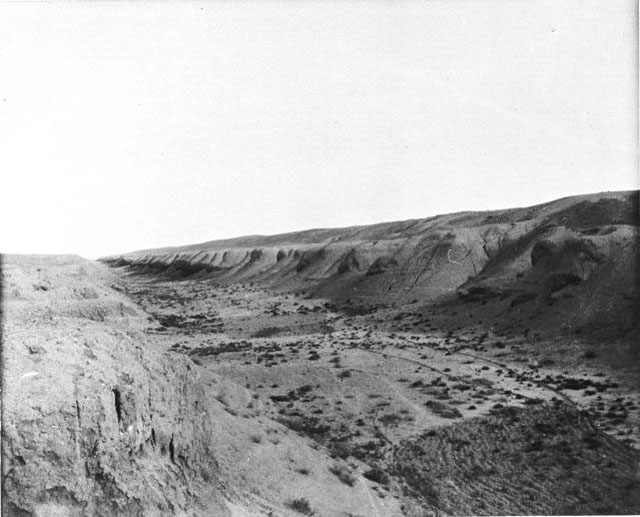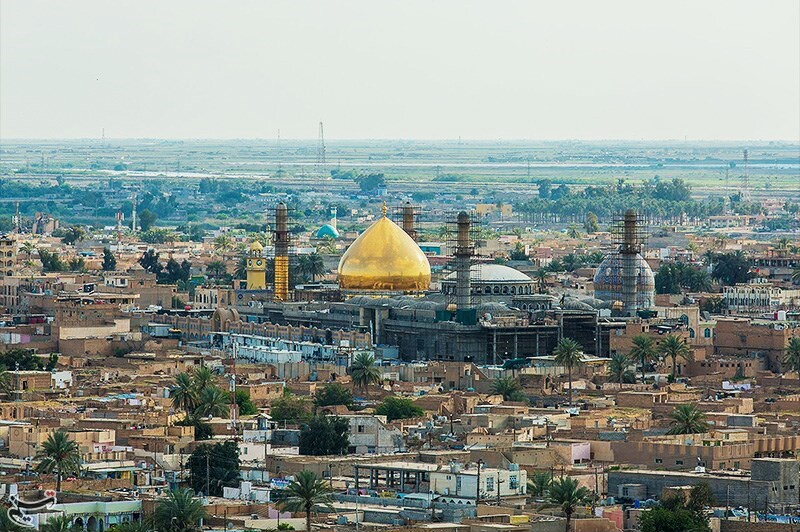|
Nahrwān
The Nahrawan Canal () was a major irrigation system of the Sasanian Empire, Sasanian and early Islamic periods in central Iraq, along the eastern banks of the Tigris and the lower course of the Diyala River. Created in the 6th century, it reached its peak under the Abbasid Caliphate, when it served the main water supply for the Abbasid capital of Baghdad, while the regions irrigated by it served as the city's main breadbasket. Its destruction and progressive abandonment from the mid-10th century onwards mirror the Abbasid Caliphate's decline. History The first irrigation works along the Diyala River were undertaken in Parthian Empire, Parthian times. Indeed, it may be that the lower part of the Nahrawan Canal was originally the lower course of the Diyala. The large-scale canal system of early medieval times however was created in the reign of the Sassanid ruler Khosrow I (), who also established it as a separate administrative district (). A treasury and mint were possibly establ ... [...More Info...] [...Related Items...] OR: [Wikipedia] [Google] [Baidu] |
Sasanian Empire
The Sasanian Empire (), officially Eranshahr ( , "Empire of the Iranian peoples, Iranians"), was an List of monarchs of Iran, Iranian empire that was founded and ruled by the House of Sasan from 224 to 651. Enduring for over four centuries, the length of the Sasanian dynasty's reign over ancient Iran was second only to the directly preceding Arsacid dynasty of Parthia. Founded by Ardashir I, whose rise coincided with the decline of Arsacid influence in the face of both internal and external strife, the House of Sasan was highly determined to restore the legacy of the Achaemenid Empire by expanding and consolidating the Iranian nation's dominions. Most notably, after defeating Artabanus IV of Parthia during the Battle of Hormozdgan in 224, it began competing far more zealously with the neighbouring Roman Empire than the Arsacids had, thus sparking a new phase of the Roman–Iranian Wars. This effort by Ardashir's dynasty ultimately re-established Iran as a major power of late an ... [...More Info...] [...Related Items...] OR: [Wikipedia] [Google] [Baidu] |
Baqubah
Baqubah (; BGN: Ba‘qūbah; also spelled Baquba and Baqouba) is the capital of Iraq's Diyala Governorate. The city is located some to the northeast of Baghdad, on the Diyala River. In 2003 it had an estimated population of some 280,000 people. Baqubah served as a way station between Baghdad and Khorasan on the medieval Khorasan Road. During the Abbasid Caliphate, it was known for its date and fruit orchards, irrigated by the Nahrawan Canal. It is now known as the centre of Iraq's commercial orange groves. During the Iraq war, Baqubah served the capital of Al Qaeda in Iraq as well as the Islamic State of Iraq, the predecessors of the Islamic State. History Baqubah's name originates from the Aramaic words "Bet" (house) and "aquba" (Guardian or Punishment) meaning "The house of Punishment/The Guardian's house". The city was used as a refugee camp for Assyrian refugees fleeing the Assyrian genocide. A refugee camp was set up outside the city, which accommodated between 40,00 ... [...More Info...] [...Related Items...] OR: [Wikipedia] [Google] [Baidu] |
Harun Al-Rashid
Abū Jaʿfar Hārūn ibn Muḥammad ar-Rāshīd (), or simply Hārūn ibn al-Mahdī (; or 766 – 24 March 809), famously known as Hārūn al-Rāshīd (), was the fifth Abbasid caliph of the Abbasid Caliphate, reigning from September 786 until his death in March 809. His reign is traditionally regarded to be the beginning of the Islamic Golden Age. His epithet ''al-Rashid'' translates to "the Just", "the Upright", or "the Rightly-Guided". Harun established the legendary library Bayt al-Hikma ("House of Wisdom") in Baghdad in present-day Iraq, and during his rule Baghdad began to flourish as a world center of knowledge, culture and trade. During his rule, the family of Barmakids, which played a deciding role in establishing the Abbasid Caliphate, declined gradually. In 796, he moved his court and government to Raqqa in present-day Syria. Domestically, Harun pursued policies similar to those of his father Al-Mahdi. He released many of the Umayyads and 'Alids his brother Al ... [...More Info...] [...Related Items...] OR: [Wikipedia] [Google] [Baidu] |
Al-Ma'mun
Abū al-ʿAbbās Abd Allāh ibn Hārūn al-Maʾmūn (; 14 September 786 – 9 August 833), better known by his regnal name al-Ma'mun (), was the seventh Abbasid caliph, who reigned from 813 until his death in 833. His leadership was marked by the power and prosperity of the Abbasid Caliphate, al-Ma'mun promoted the Graeco-Arabic translation movement, the House of Wisdom, flowering of learning and the sciences in Baghdad, and the publishing of al-Khwarizmi's The Compendious Book on Calculation by Completion and Balancing, book now known as "Algebra". Making him one of the most important caliphs in the Islamic Golden Age. He is also known as a proponent of the rational Islamic theology of Mu'tazilism. Al-Ma'mun succeeded his half-brother al-Amin after a Fourth Fitna, civil war, much of his reign was spent on peace campaigns. His strong support for Mu'tazilism led him to imprison a Sunni Islam, Sunni Imam, Ahmad ibn Hanbal in an event that became known as ''mihna.'' Al-Ma'mun's for ... [...More Info...] [...Related Items...] OR: [Wikipedia] [Google] [Baidu] |
Ba'quba
Baqubah (; BGN: Ba‘qūbah; also spelled Baquba and Baqouba) is the capital of Iraq's Diyala Governorate. The city is located some to the northeast of Baghdad, on the Diyala River. In 2003 it had an estimated population of some 280,000 people. Baqubah served as a way station between Baghdad and Khorasan on the medieval Khorasan Road. During the Abbasid Caliphate, it was known for its date and fruit orchards, irrigated by the Nahrawan Canal. It is now known as the centre of Iraq's commercial orange groves. During the Iraq war, Baqubah served the capital of Al Qaeda in Iraq as well as the Islamic State of Iraq, the predecessors of the Islamic State. History Baqubah's name originates from the Aramaic words "Bet" (house) and "aquba" (Guardian or Punishment) meaning "The house of Punishment/The Guardian's house". The city was used as a refugee camp for Assyrian refugees fleeing the Assyrian genocide. A refugee camp was set up outside the city, which accommodated between 40,000 ... [...More Info...] [...Related Items...] OR: [Wikipedia] [Google] [Baidu] |
Samarra
Samarra (, ') is a city in Iraq. It stands on the east bank of the Tigris in the Saladin Governorate, north of Baghdad. The modern city of Samarra was founded in 836 by the Abbasid caliph al-Mu'tasim as a new administrative capital and military base. In 2003 the city had an estimated population of 348,700. During the Iraqi Civil War (2006–08), Samarra was in the " Sunni Triangle" of resistance. The archeological site of Samarra still retains much of the historic city's original plan, architecture and artistic relics. In 2007, UNESCO designated it a World Heritage Site. History Prehistoric Samarra The remains of prehistoric Samarra were first excavated between 1911 and 1914 by the German archaeologist Ernst Herzfeld. Samarra became the type site for the Samarra culture. Since 1946, the notebooks, letters, unpublished excavation reports and photographs have been in the Freer Gallery of Art in Washington, D.C. The civilization flourished alongside the Ubaid per ... [...More Info...] [...Related Items...] OR: [Wikipedia] [Google] [Baidu] |
Iraq Under The Abbasid Caliphate
Iraq, officially the Republic of Iraq, is a country in West Asia. It is bordered by Saudi Arabia to the south, Turkey to the north, Iran to the east, the Persian Gulf and Kuwait to the southeast, Jordan to the southwest, and Syria to the west. The country covers an area of and has a population of over 46 million, making it the 58th largest country by area and the 31st most populous in the world. Baghdad, home to over 8 million people, is the capital city and the largest in the country. Starting in the 6th millennium BC, the fertile plains between Iraq's Tigris and Euphrates rivers, referred to as Mesopotamia, fostered the rise of early cities, civilisations, and empires including Sumer, Akkad, and Assyria. Known as the cradle of civilisation, Mesopotamia saw the invention of writing systems, mathematics, navigation, timekeeping, a calendar, astrology, the wheel, the sailboat, and a law code. After the Muslim conquest of Mesopotamia, Baghdad became the capital o ... [...More Info...] [...Related Items...] OR: [Wikipedia] [Google] [Baidu] |
Yaqut Al-Hamawi
Yāqūt Shihāb al-Dīn ibn-ʿAbdullāh al-Rūmī al-Ḥamawī (1179–1229) () was a Muslim scholar of Byzantine ancestry active during the late Abbasid period (12th–13th centuries). He is known for his , an influential work on geography containing valuable information pertaining to biography, history and literature as well as geography. Life ''Yāqūt'' (''ruby'' or '' hyacinth'') was the '' kunya'' of Ibn Abdullāh ("son of Abdullāh"). He was born in Constantinople, the capital of the Byzantine Empire, called in Arabic al-Rūm, whence his '' nisba'' "al-Rūmi". Captured in war and enslaved, Yāqūt became " mawali" to ‘Askar ibn Abī Naṣr al-Ḥamawī, a trader of Baghdad, Iraq, the seat of the Abbasid Caliphate, from whom he received the '' laqab'' "al-Hamawī". As ‘Askar's apprentice, he learned about accounting and commerce, becoming his envoy on trade missions and travelling twice or three times to Kish in the Persian Gulf. In 1194, ‘Askar stopped his salar ... [...More Info...] [...Related Items...] OR: [Wikipedia] [Google] [Baidu] |
Seljuk Empire
The Seljuk Empire, or the Great Seljuk Empire, was a High Middle Ages, high medieval, culturally Turco-Persian tradition, Turco-Persian, Sunni Islam, Sunni Muslim empire, established and ruled by the Qiniq (tribe), Qïnïq branch of Oghuz Turks. The empire spanned a total area of from Anatolia and the Levant in the west to the Hindu Kush in the east, and from Central Asia in the north to the Persian Gulf in the south, and it spanned the time period 1037–1308, though Seljuk rule beyond the Anatolian peninsula ended in 1194. The Seljuk Empire was founded in 1037 by Tughril (990–1063) and his brother Chaghri Beg, Chaghri (989–1060), both of whom co-ruled over its territories; there are indications that the Seljuk leadership otherwise functioned as a triumvirate and thus included Seljuk dynasty, Musa Yabghu, the uncle of the aforementioned two. During the formative phase of the empire, the Seljuks first advanced from their original homelands near the Aral Sea into Greater Kho ... [...More Info...] [...Related Items...] OR: [Wikipedia] [Google] [Baidu] |





